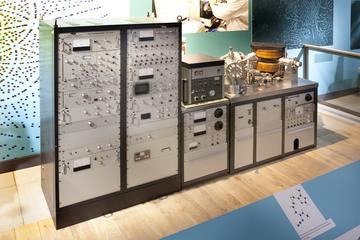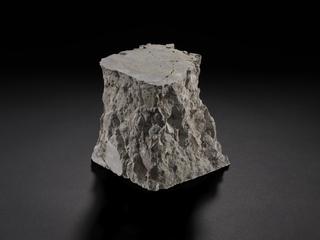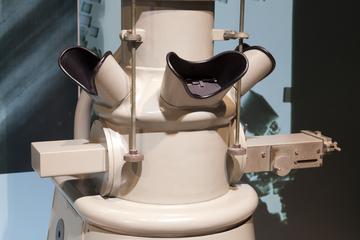
Sample of concrete enhanced with graphene
- Made:
- 2021 in Manchester










Sample of concrete enhanced with 0.05% graphene before compression strength testing. One of four test samples of concrete enhanced with graphene, tested at the Graphene Engineering Innovation Centre (GEIC), University of Manchester, by Dr Lisa Scullion, 2021. The testing process supported the development of a new industrial product, Concretene, produced by Nationwide Engineering, Wiltshire. Production of cement for concrete in the building industry is one of the leading causes of global carbon dioxide emissions. The addition of up to 1% of graphene strengthens concrete by around 30% compared to standard concrete, meaning significantly less is needed to achieve the equivalent structural performance, reducing carbon footprint and costs.
Concrete is the most abundant manufactured material on earth. It provides the literal foundations of modern life, but this comes with a high environmental cost.
Dr Lisa Scullion, applications manager at the Graphene Engineering Innovation Centre in Manchester, wanted to test a new idea - could graphene could make concrete stronger?
Her team found that adding a tiny amount of graphene to concrete makes it stronger and she says of the tests ‘the results from our tests have been even better than we imagined; it turned out that putting graphene in concrete gave lots of extra properties that we did not expect.’
Concrete production is one of the leading causes of global carbon dioxide emissions. If concrete can be made stronger without adding volume, less will be needed for the same application, reducing the amount of carbon dioxide emissions for those products where graphene is added.
Details
- Category:
- Scientific Instruments & Research
- Object Number:
- 2022-90/1
- Measurements:
-
overall: 100 mm x 100 mm x 100 mm,
- type:
- sample
- credit:
- Gift of University of Manchester




